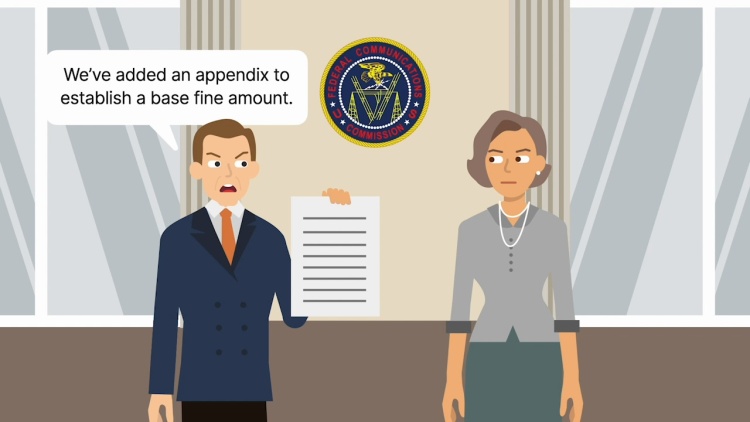United States Telephone Association v. Federal Communications Commission
United States Court of Appeals for the District of Columbia Circuit
28 F.3d 1232 (1994)

- Written by Eric Cervone, LLM
Facts
Section 503(b) of the Communications Act (Act), 47 U.S.C. § 503(b), authorized the Federal Communications Commission (FCC) (defendant) to levy fines against violators of the Act and set maximum amounts for different categories of violation. Initially, when applying § 503(b), the FCC customarily set fines for individual violations on a case-by-case basis. However, in 1991, the FCC issued an order that set standard fines for each category of violation. Under the 1991 order, common carriers, as a class, would pay heavier fines than other licensees for the same violations. The FCC issued this 1991 order without following the Administrative Procedure Act’s (APA’s), 5 U.S.C. § 551 et seq., notice and comment procedure. The United States Telephone Association (USTA) (plaintiff), a telephone-industry trade group, petitioned the FCC for a reconsideration of the FCC order. The FCC denied the USTA petition. USTA then appealed to the United States Court of Appeals for the District of Columbia Circuit. USTA contended that the FCC should have followed the APA’s notice and comment procedure before issuing the FCC’s 1991 order. The FCC responded that it had departed from its order on several occasions, and that meant it was not a binding order. Therefore, because the FCC did not believe the order was binding, the FCC argued that it had acted properly in not following notice and comment procedure.
Rule of Law
Issue
Holding and Reasoning (Silberman, J.)
What to do next…
Here's why 899,000 law students have relied on our case briefs:
- Written by law professors and practitioners, not other law students. 47,000 briefs, keyed to 994 casebooks. Top-notch customer support.
- The right amount of information, includes the facts, issues, rule of law, holding and reasoning, and any concurrences and dissents.
- Access in your classes, works on your mobile and tablet. Massive library of related video lessons and high quality multiple-choice questions.
- Easy to use, uniform format for every case brief. Written in plain English, not in legalese. Our briefs summarize and simplify; they don’t just repeat the court’s language.





